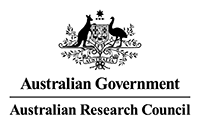The typical Australian bus stop is a seat, shelter and timetable. It could just be left as that – it functions perfectly well as is.
But if the bus stop’s a point people come to just before they come home, what other things might they have to do? It’s possible they need to pick up some groceries, or go to the bank, so they run errands and catch the bus later. Or they might do these in their lunch break so they can get home early and spend more time with their family and friends.
What if all these services were made more accessible at transport hubs? This phenomenon can already be seen in some form within the immediate precincts of many train stations – they have attached news agents, food and convenience stores, drycleaners and ATMs. But around the world more advanced ways of bringing services together are being experimented with.
At Melbourne Airport you can order groceries online before catching a flight and have them waiting for you when you get off the plane. Across Germany, there are DHL ‘packstations’ – you can have a package delivered to a packstation close to you and be sent a pin code to get it out, rather than having to travel to the post office and wait in line. Packstations are often located in transport hubs. Similar concepts exist in other European countries.
New services like these, that feed off advances in digital communications technologies make cities more attractive for young professionals (contributing to city growth) more desirable for retail (increasing the diversity of services in transport precincts), and increase productivity – it’s possible to advance a number of areas with just a single artefact like a bus stop.

